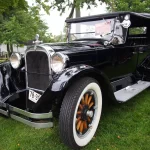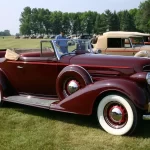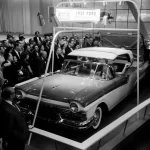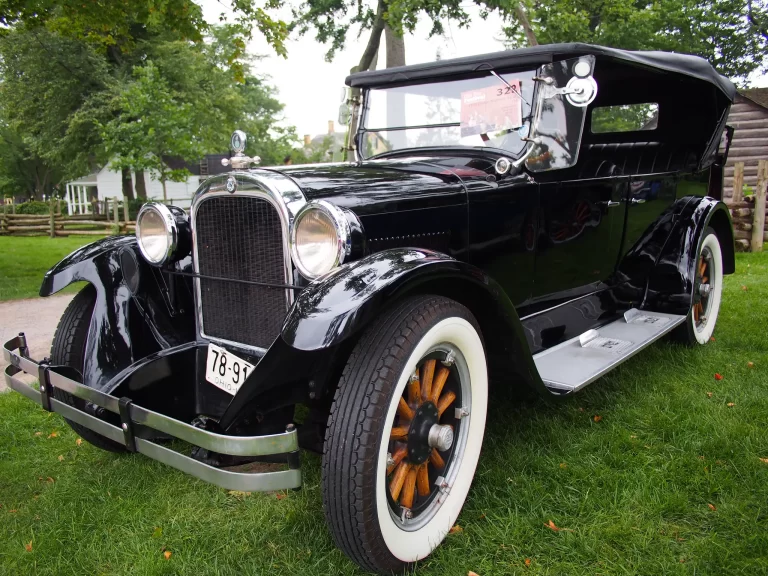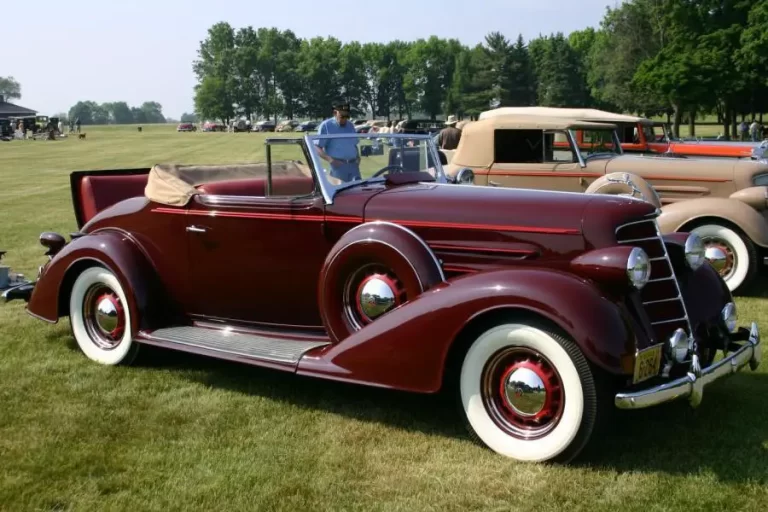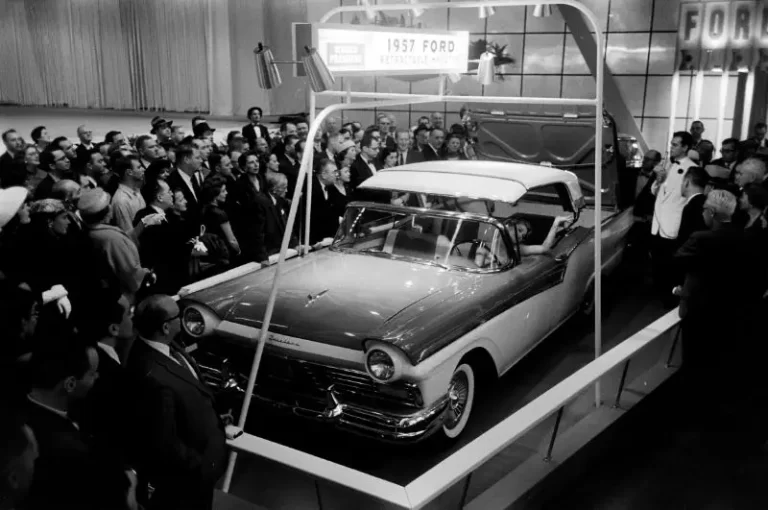
In the golden age of aviation, the skies were alive with inventors and pioneers, each chasing the dream of personal flight. Among them was the remarkable Waldo Dean Waterman, a maverick from San Diego, California, who etched his name in history with the creation of the revolutionary “Arrowbile,” later referred to as the Aerobile. This extraordinary flying car, patented on November 9, 1937, was a testament to Waterman’s unwavering spirit of innovation.
Waterman’s aviation journey began in his high school years, as a determined young man set out to explore the uncharted realm of flight. In 1909, he constructed his first aircraft, a biplane hang glider. The fearless teenager soared through the skies, mastering the art of flight on a slope near his home and through auto-tow. His journey had begun, and it was nothing short of spectacular.
Joining Forces with Glenn Curtiss

By 1911, Waterman had made his way to North Island, San Diego, where the legendary Glenn Curtiss had set up his winter headquarters. Waterman, undeterred by his previous setbacks, became an integral part of Curtiss’ aviation adventures. He was a frequent passenger on Curtiss’ planes, soaking up knowledge and inspiration from one of the era’s aviation greats.
Waterman’s aviation enthusiasm was unquenchable, and he soon enrolled in the University of California to study mechanical engineering. But fate had other plans, as World War I erupted, and Waterman was deemed ineligible for military service due to injuries he sustained from a previous crash. Undeterred, he accepted a crucial role as the head of the Department of Theory of Flight at the School of Military Aeronautics, continuing his passionate journey in the world of aviation.
The Birth of the Arrowbile
Waterman’s destiny reached a turning point in 1937 when he received a patent for his most ingenious creation, the Arrowbile, inspired by Curtiss who attempted to build a flying car in the 1910s. This flying car was a true marvel of engineering, based on the earlier Arrowplane design. It featured a high-wing monoplane with detachable wings and was powered by a Studebaker engine. The concept was revolutionary; an automobile that could transform into an airplane, and vice versa.
Waterman’s dream took flight in the most ambitious way possible. He, along with a team of like-minded individuals, attempted a daring cross-country adventure from Santa Monica to Cleveland. Three out of the five Arrowbiles made the journey, a testament to Waterman’s visionary design. Arrowbile No. 6, is known as the Aerobile and is a cherished exhibit at the Smithsonian Air and Space Museum in Dulles, Virginia. It should be noted, only five ever flew, as Arrowbile number 5 was never completed.

Arrowbile History and Development
Design and Development
Waterman’s foray into tailless aircraft began with the Waterman Whatsit, a low swept-wing monoplane with a pusher configuration and wing-mounted tricycle undercarriage. Powered by a 100 hp Kinner K-5 radial pusher engine, the Whatsit took to the skies in 1932.
In May 1935, Waterman submitted the Arrowplane (or W-4) for the government-funded Vidal Safety Airplane competition. The Arrowplane featured a strut-braced high wing on a narrow fuselage pod with a tricycle undercarriage. Its wings were fabric-covered with wooden spars and metal ribs, while the fuselage was steel-framed and aluminum-covered. The aircraft was propelled by a 95 hp Menasco B-4 Pirate pusher engine.
The success of the Arrowplane led to the formation of the Waterman Arrowplane Co. in 1935, with the aim of producing a roadable version. The resulting Arrowbile, or W-5, retained the Arrowplane’s structural and aerodynamic design, with some modifications for road use. The main change was the substitution of the air-cooled Menasco engine with a water-cooled 100 hp Studebaker engine, positioned lower in the pod, and driving the propeller via belts.
A Versatile Flying and Road Machine
The Arrowbile featured a unique control system, with the same wheel in the cabin serving as both the road and flight control interface. The elevons on the outer wings controlled pitch and banking differentially. The rudders, interconnected with the elevons, adjusted yaw and assisted the elevons in banking.
The Arrowbile’s cabin was designed with car-like standards, offering ease of access and a baggage space beneath the seats.
Taking to the Skies
On February 21, 1937, the Arrowbile made its maiden flight, nearly simultaneous with the Gwinn Aircar. Waterman’s innovation was not without interest, as Studebaker placed an order for five units. The first three Arrowbiles embarked on an impressive journey from Santa Monica to the National Air Races venue in Cleveland, a testament to their capabilities. He received a patent for the Arrowbile on November 9, 1937.
Variants and Legacy
Several variants of the Arrowbile were developed, with minor changes in design and engine choices. Notably, the sixth aircraft, not completed until 1957, was a three-seater roadable version powered by a water-cooled 120 hp Tucker-Franklin engine.
Arrowbile Specifications
- Capacity: Two
- Length: 19 ft 4 in
- Wingspan: 38 ft 0 in
- Empty Weight: 1,941 lb
- Gross Weight: 2,500 lb
- Powerplant: 1 × Studebaker-Waterman 6-cylinder inline, water-cooled, 100 hp
- Maximum Speed: 120 mph
- Cruise Speed: 102 mph
- Range: 350 mi
- Rate of Climb: 600 ft/min
- Landing Speed: 45 mph
- Maximum Road Speed: Approximately 70 mph
The Legacy Lives On
Waldo Dean Waterman’s legacy goes beyond the creation of the Aerobile. In the 1960s, he continued to push the boundaries of flight. His designs included the “Early Bird” and the “Chevybird.” His dedication to aviation was evident even in his later years when he directed the construction of a replica of his original biplane hang glider, cementing his place as a true aviation pioneer.
In 1968, Waldo Dean Waterman was rightfully inducted into the International Air & Space Hall of Fame. His spirit of innovation and his remarkable creation, the Aerobile, continue to inspire aviators and enthusiasts worldwide, reminding us of the incredible possibilities that lie within the realm of flight. Waldo Waterman, the man who dared to turn our roadways into runways, will forever be remembered as a trailblazer in aviation history.



